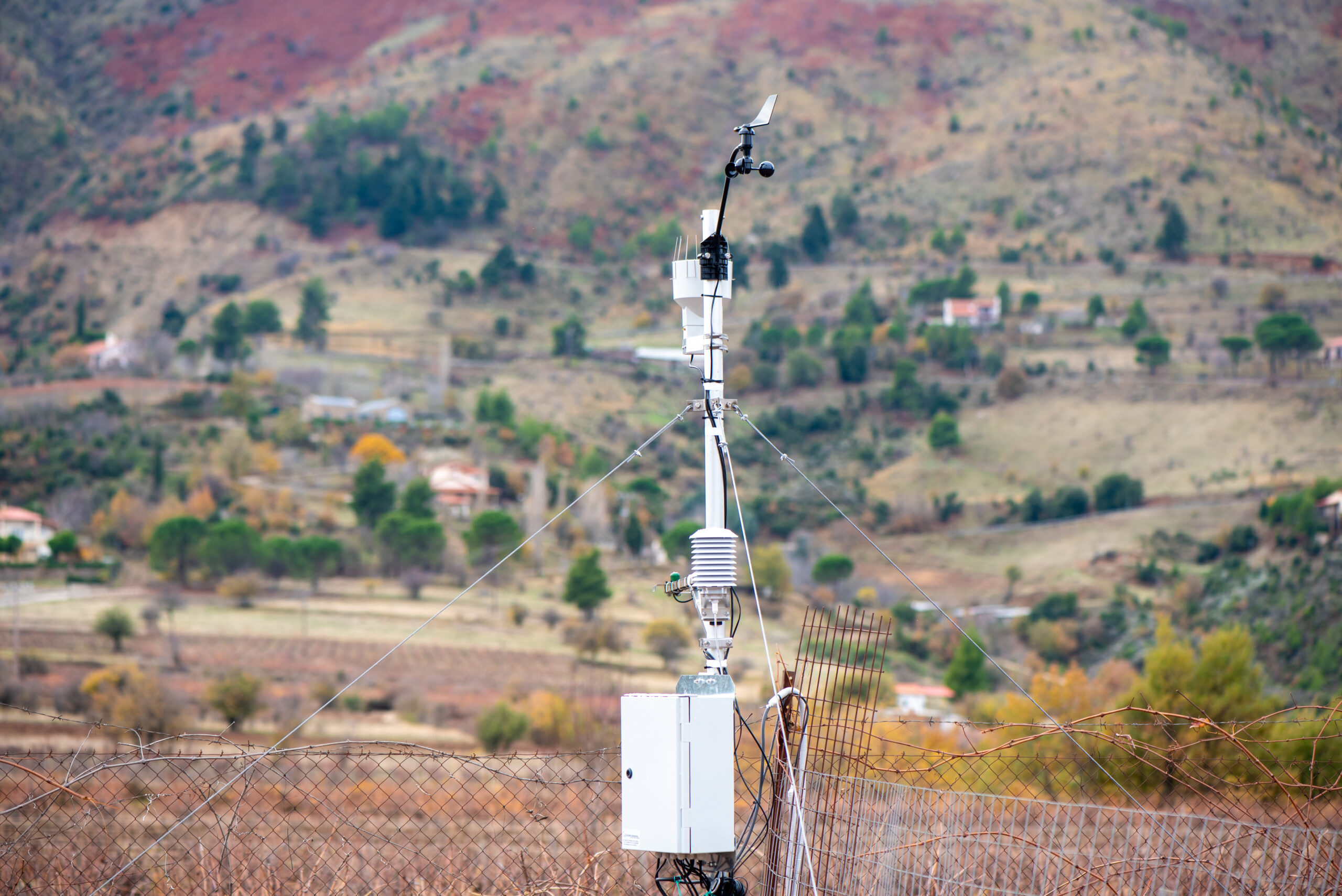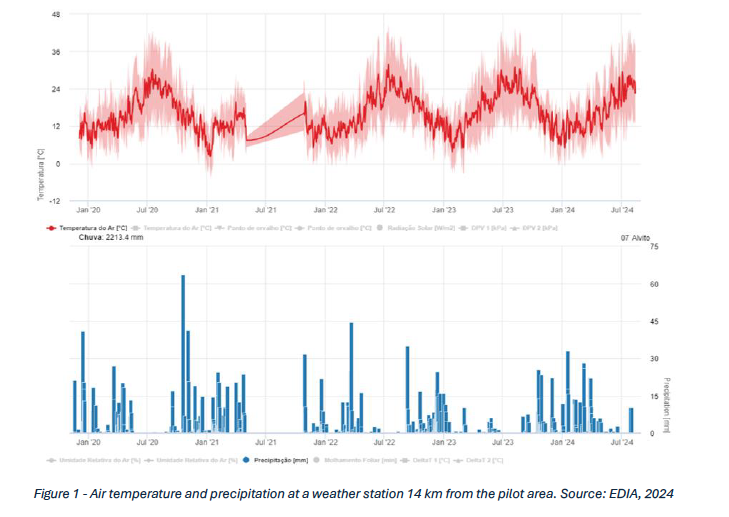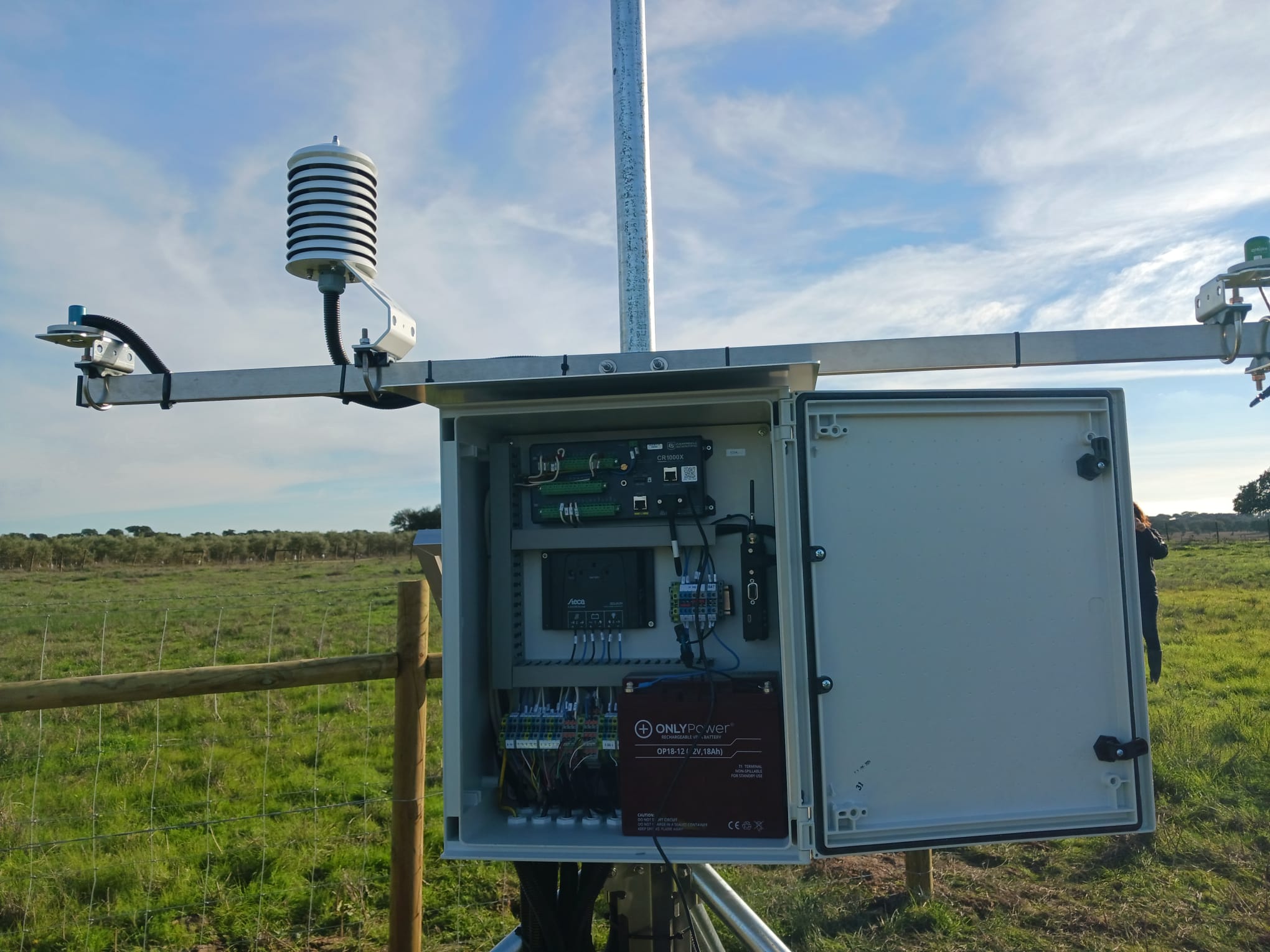The Germ of Life project, supported by Interreg Euro-MED, is accelerating its development by carrying out pilot tests in areas of Greece, Italy, Portugal and Spain during 2025. The pilots are installed in areas around the Mediterranean that differ from one another. There is a need to develop and assess effective climate change mitigation policies. These policies depend not only on climate conditions but also on the type of the habitats affected. Regarding drought risk assessment, the situation of each pilot is as follows:
Greece
Precipitation reduction has already been recorded in every climatic zone of the country. The Hellenic Germ of Life pilot is installed in Western Greece in a semi-mountainous area of Pyrgaki with vineyards where this reduction in precipitation amount has also been observed. This pilot is carried out with the involvement of the Region of Western Greece, which is one of the partners of the project, led by the University of Patras.
Italy
An annual report provides an overview of the water situation of the Piedmontese portion of the Po River basin. This river is the main feature of the Piedmontese Po Park, where a specific area has been selected as the pilot site for the project. In Piedmont, an overall reduction of 9% in average precipitation in 2023, compared to the period was recorded. Additionally, the average annual temperature in 2023 was 1.3 °C higher than the 1991-2020 reference period. The drought phenomenon has been analysed using a synthetic classification index of drought years that considers the severity of drought (3-month Standardized Precipitation Index), drought duration and the spatial extent. This dimensionless index ranges from 0 to 1 and provides a global assessment of drought conditions. Lamoro Agenzia di Sviluppo, one of the project partners, is involved in this pilot.
Portugal
Data collected from an weather station near the pilot area, in Alentejo, shows the average daily temperature and precipitation over the last four years, worsening drought conditions. Forecasts and projections suggest that the situation will deteriorate further in the future. This pilot is carried out by EDIA, another of the project’s partners.
Spain
The Junta de Andalucia, project partner, has developed a system of indicators to track climate trends and their associated impacts. In Andalusia, where the Spanish pilot will be installed, the annual average temperature for the 1991-2020 period was recorded 0.4 °C higher than the 1961-1990 period, while precipitation was 11% lower. The application of the Standardized Precipitation Drought Index which measures the length and intensity of dry periods, shows that drought periods are now shorter but more frequent.

Drought Risk Assessment
In the pilot areas the drought risk has not been directly studied, but has been indirectly assessed:
Greece
Gridded reanalysis data and projections based on future (Intergovernmental Panel on Climate Change, IPCC) scenarios highlight the drought risk in the area. The Hellenic pilot assesses the drought risk on vineyards at altitude plateaus. The local viticulturists’ association has reported a significant reduction in grape harvests in 2023 and damage to nearly half the vineyards in 2024 due to the lack of rain, forcing many growers to irrigate their fields.
Italy
Drought impacts are evident in the wider Po Piemontese Park , with oaks and alders dying during drought periods, and non-native species taking advantage of the reduced water availability. Several reforestation efforts are underway to plant more resilient, drought-tolerant species. The Arpa meteorological station in the nearby region provides precipitation and humidity data.
Portugal
Precipitation and temperature data are collected from a nearby EDIA weather station. Future scenario projections suggest significant drought risk for the pilot region, with temporary ponds facing water shortages during drought periods. This impacts native vegetation and allows non-native species to thrive, displacing endemic species.
Spain
Data from Jerez de la Frontera, 40 km from the pilot area, shows a 30-year upward trend in annual average temperatures, while temperatures were more stable in previous decades. The Standardized Precipitation Drought Index for the Guadalete and Barbate River basins, located nearby, indicates that drought conditions have worsened in recent years.

Perspective of a Drought Vulnerability System
Based on the above, there is a need to establish a drought vulnerability system to assess vulnerability, both for the project’s needs and for the specific requirements of each pilot area. The shared features of the partner requirements are as follows:
Climatic data
In each pilot area, the following parameters will be measured in situ: precipitation, wind speed and direction, air temperature, relative humidity, soil water content, incoming photosynthetic photon flux density, and incoming and outgoing reflectance at six different wavelength bands. Data from nearby meteorological stations should also be considered for inclusion.
Historical weather data should be used to identify long-term drought patterns. If such data is unavailable, reanalysis or satellite data (e.g., ERA5 Land data from the EU Copernicus program) should be used.
Predictive models should be incorporated to project drought vulnerability on a sub-seasonal scale. Additional models, such as grape yield prediction under varying drought conditions (for the Hellenic pilot), should also be considered.
Satellite imagery should be used to monitor soil moisture, vegetation status, and evapotranspiration levels.
Vulnerability assessment
All partners should agree on a common drought index to quantify drought levels across the project. Various indices are suggested by pilot sites. For example, the Hellenic pilot suggests using the Standardized Precipitation Index (SPI), Soil Moisture Deficit, and Crop Water Stress Index (CWSI). The Portuguese pilot adds the Standardized Precipitation Evapotranspiration Index (SPEI), the number of abnormal/high-temperature days, and the number of consecutive dry days. A common index must be established to align with the project’s resources.
Decision Support and Mitigation Strategies
An early-warning system should be implemented to notify stakeholders of impending drought conditions, using real-time data and predictive models. Notifications should be based on critical thresholds for drought indicators, which will be defined according to the characteristics of each area.


